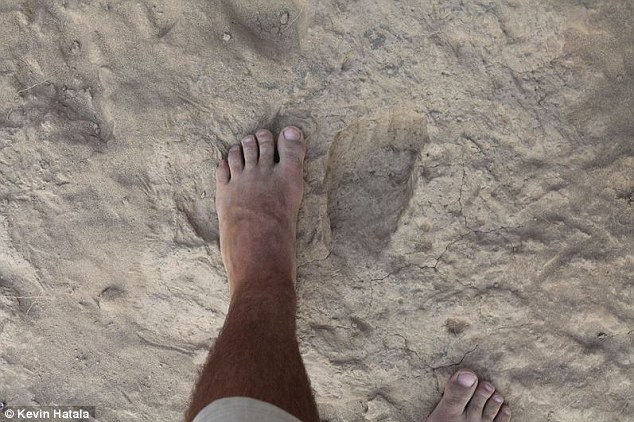The analysis of footprints left by human ancestors some 1.5 million years ago reveals that they closely resembled our own feet. The study also showed that Homo Erectus walked more like modern humans than their predecessors. These early humans are also believed to have developed modern traits, such as tolerance and mutual cooperation, to help them in day-to-day tasks.
Despite the fact that our Homo Erectus ancestors have long left us, and it has been thousands of years since they last walked on Earth, it’s humbling to know that modern humans share so much with our prehistoric ancestors. The footprint discovered in Kenya, which has been dated back 1.5 million years, reveals much more about the Homo Erectus than any other single fossil found to date.

The discovery suggests that several adult males were present at the site where the footprint was found, indicating that Homo Erectus had clearly moved on from a lone hunter habitat to a more coherent and tolerable attitude towards living. The ancient hominid footprint was discovered in 2009, near a small town in Kenya called Ileret. The subsequent study was conducted by the scientists and anthropologists from the Max Planck Institute of Evolutionary Anthropology in Leipzig in collaboration with another group of esteemed international scientists.
After the initial find of the footprint, a subsequent research effort at the site led the researchers to eventually find an amazing set of trace fossils that consisted of nearly 100 tracks belonging to 20 different adult males, all believed to be Home Erectus. The tracks did not reveal any kind of hostility or violence between the males, which suggests that the individuals present at the site were actually working in collaboration with one another. The footprints found at the five different sites in the area closely resemble modern humans in anatomy and structure; this has excited anthropologists studying ancient human ancestors.
According to Kevin Hatala of the George Washington University and Max Planck Institute for Evolutionary Anthropology, the analyses carried out on the findings have yielded the only direct and most conclusive evidence in support of the hypothesis that our fossil relatives walked in much the same manner as we do in the 21st century.

It has long been the subject of debate among scientists and anthropologists about when the unique habitual bipedal locomotion that sets modern humans apart from other existing primates developed and how exactly it fits into the evolutionary timeline. Determining the conclusive answers to the appearance of modern gait in hominids is a daunting task when scientists rely on the traditional forms of analyzing paleoanthropological data. However, the recent findings in Kenya and subsequent research using modern experimental techniques have enabled scientists to probe deeper and have a unique look at the patterns of the development of locomotive and other social structures in Homo Erectus.
